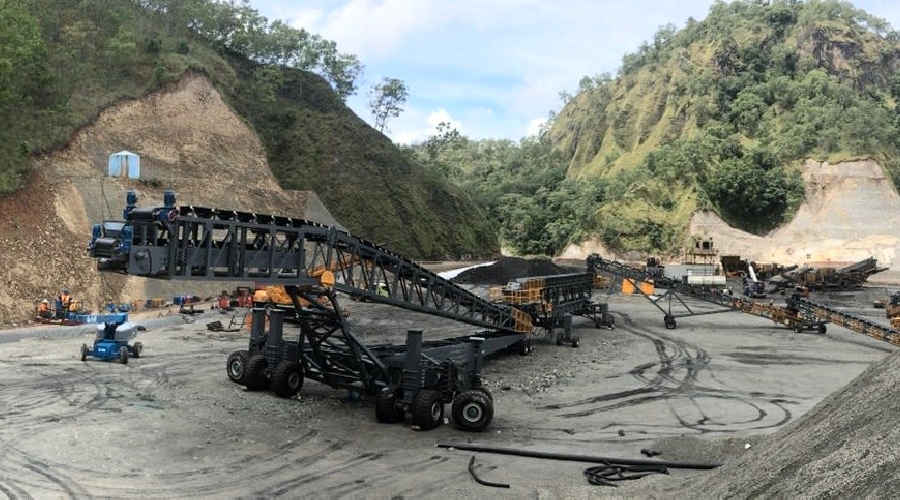
Self Levelling Stacker
Many mining companies settle for off the shelf products believing the cost saving of this type of product versus a purpose designed and built unit far outweighs the benefits, whilst this may be true in some cases, in many though it is actually just as cost effective to design and manufacture exactly what you want. Striker has been doing this for nearly 20 years and built a massive library of so called “one off” items of plant. The latest design and manufacture contract was for a heap leach copper project in Indonesia that had some challenges to overcome in terrain and operating conditions.
As such Striker looked through the vast array of previous designs of conveying and stacking from the MAX Plant range and was able to utilise previous equipment and customise this equipment to suit the clients exacting requirements for agglomerating, conveying and stacking the product. The complete plant needed to be moved on a regular basis due to the leach pad design and the terrain of the pad this required a fully mobile plant that could effectively operate on a 8 degree gradient both across the leach pad and along the length of the pad.
“The stacker needs to be fully automated with self levelling and radial functions, whilst the follower and grass hopper conveyors need manual level controls on them, this was a challenge for the stacking due to the fact we had varying grades of terrain in both north south and east west directions, the solution was to design a new axle to suit one of the existing radial stackers and have hydraulic raise and lower of the radial wheels that where linked to level sensors that automatically activated when the stacker tilted outside the operating parameters and self levelled” commented Michael Colvin Striker Australia GM
“The follower conveyor and grasshopper conveyors where much simpler design and only required a few tweaks form a previous design said Colvin, we had a proven design from 10 years ago and just needed to add the manually levelling axles to it, a fairly simple but innovative idea”
Agglomeration or condition drum was another challenge, it needed to be mobile and easily moved on site, the client initially wanted a wheel mounted unit, but when the design team at Striker came up with an out of the box idea of mounting on tracks the client immediately jumped at the idea and so a completely new concept and design was born out of necessity and need. The final product has many features and runs a dual system of diesel and electric controls to allow the plant to be tracked around site whilst operating from the mains power supply.
Feeding the agglomeration and stacking circuit is a Striker MAX Plant 3 stage crushing circuit, in ETRAC configuration, the plant consists of a track mounted primary, secondary and tertiary crushers with twin 20×7 double deck track screens, all with dual power systems to allow moving and relocation when no mains power source is available. The primary JM1180E track
Another feature of the Striker MAX Plant design was the logistical head ache of getting them from the Striker factory in Malaysia onto the remote location in Indonesia, with only a LCT barge service available onto the island and then the machines needed to be tracked along a beach and up the mountain to the operation location, again the team at Striker ensured that the machines had the features to allow the tracking ability and loading ability onto the initial break bulk vessel. All Striker machines come with designated lifting points to allow a full lift of the machine from wharf to ship or ship to shore, this feature initially was designed and included on machines going to the remote locations of PNG, but has since become a standard feature on all Striker machines.